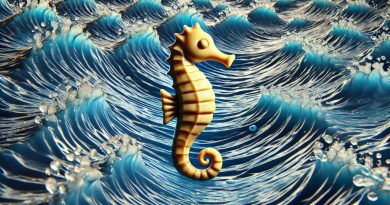Emoji de tiburón: La diversión detrás de la aleta
Emojis have become the hieroglyphs of the digital age, allowing us to expresar emociones, activities, and objects in a fun and visually appealing way. One evocative symbol in our emoji vocab is the shark emoji, swimming into our conversations with its sleek design and varied connotations. This is one of the more interesting and often-used emojis de animales. It represents one of the ocean’s most iconic creatures, and it can say so much without a word—one use of the 🦈 emoji can denote danger, a love for marine life, or even excitement for a shark-themed event or TV show.
The shark emoji first made its splash in our keyboards in 2016. It Added a dose of the marine predator’s mystique to our messages. Since then, this emoji has surfaced across various platforms, showing some minor design variations but always maintaining its recognizable shark characteristics. Whether used to represent shark week, a sports team with a shark mascot, or simply to convey the user’s fascination with this marine animal, the 🦈 emoji has solidified its place in our digital lexicon.
🦈Key Takeaways
-
Emoji Evolution: The shark emoji debuted in our digital world in 2016, bringing with it the mystique and allure of one of the ocean’s most renowned predators.
-
Design Diversity: Across various platforms, the shark emoji exhibits minor variations in design but consistently maintains its iconic and recognizable characteristics.
-
Multifaceted Symbol: The shark emoji can convey a spectrum of messages—from signaling danger to expressing a fascination with marine life, or just sharing the thrill of shark-themed content.
-
Comunicación digital: As a vibrant part of our emoji language, the shark emoji shows the power of visual messaging in enhancing our online conversations.
-
Impacto cultural: Beyond its use in texts and social media, the shark emoji has also swum into environmental and conservation dialogues, underlining the need for shark protection.
-
Popularity Across Platforms: The consistent usage of the shark emoji in texts, tweets, and posts signifies its integral role in digital communication across different devices and social platforms.
-
Creative Expression: The shark emoji underscores the importance of emojis in conveying complex ideas or emotions quickly and effectively, enriching the way we connect digitally.
History of the Shark Emoji
When we look back, the 🦈 emoji first swam into our digital world with the emoji update in mid-2016. Since then, it’s been a favorite way for us to express our shark-related thoughts on platforms like Facebook and Instagram. We’ve seen it evolve across different operating systems, with Apple, Google, and Android each putting their unique spin on this toothy icon.
Initially designed to be a part of a wide array of animal emojis, the 🦈 emoji has become especially popular during events like the Discovery Channel’s Shark Week, turning into a symbol for excitement about these sea predators. But we use it for more than just great whites and hammerheads; it’s perfect for describing someone with a cutthroat attitude or even a fiercely competitive friend.
| Plataforma | Versión Emoji |
|---|---|
| Manzana | 🦈 |
| 🦈 | |
| 🦈 | |
| 🦈 | |
| Android | 🦈 |
| iPhone | 🦈 |
Surely, as a part of the emoji language on our iPhones and Android devices, the shark emoji has found its way into environmental conversations. Whether we’re texting on our phones or typing away on social media, the 🦈 emoji helps us highlight the importance of shark conservation.
Moreover, for those of us with a sense of humor, this emoji has snuck into our messages as a playful way to tease our friends when they’re being a bit too sneaky or predatory—like if they snag the last slice of pizza!
As we continue to ride the digital waves, the 🦈 emoji promises to be our fin-tastic companion, ever-evolving with each update. Each platform’s depiction may differ slightly—a bit more gray on Google, slightly more fierce on Apple—but at the heart of it, it’s all shark.
And there you have it! You’re now ready to add some aquatic flair to your messages.
Shark Biology and Characteristics
Before we dive into the fascinating world of sharks, let’s get up close with their biology and distinct features. We’ll explore their awe-inspiring physical appearance and some of the species you might already be familiar with.
Physical Appearance
Sharks are truly majestic creatures of the sea. They are often recognized by their streamlined bodies which are perfect for gliding through the water. They typically have a dorsal fin on their back and pectoral fins along their sides, elements crucial for their stability and speed. What really makes these oceanic beings stand out is their set of sharp teeth. This can be terrifying yet mesmerizing. Some sharks, like the great white shark, are known for their impressive and daunting teeth array.
Their coloring can vary, but many have a grey shade covering most of the body, with a lighter underbelly, which helps with camouflage from both prey and predators. This color pattern is especially noticeable in species like the grey shark.
Shark Species
Now, there is a vast ocean of diversity when it comes to shark species. The great white shark, often just called ‘white shark’, is probably the most famous thanks to its reputation as a powerful predator. However, not all sharks are the fierce hunters we often picture. Take the whale shark, for example, which is the largest fish in the ocean, yet it’s a gentle giant, feeding mainly on plankton.
Each species has its quirks and characteristics. Despite their stereotyped image, many sharks play crucial roles in the marine ecosystem beyond being apex predators. From the deep sea to shallow reefs, sharks inhabit environments all across the globe, maintaining the balance of marine life.
The Shark Emoji in Digital Communication
We’ve all seen the 🦈 emoji make a splash in texts and social media, but there’s more to this icon than meets the eye. It’s a powerful symbol in our digital language that can convey a range of emotions and messages.
Emoji Usage and Meaning
The 🦈 emoji can swim into our messages with a load of meanings. Often, it’s deployed to express a sense of danger or aggression, weaving in a touch of fear just like the creature it represents. It’s particularly potent when we’re sharing stories that have a bite to them—those that involve risk or cautionary tales.
In contrast, the shark emoji can also signify something more positive, like hunger or enthusiasm. For instance, we might use the 🦈 emoji when we’re devouring our goals and nothing can stand in our way. It symbolizes our transition from mere fish in the sea to top predators of our own destiny. Furthermore, the emoji can suggest blood in the water, figuratively speaking, hinting that someone is facing a challenge or competition.
Whether we’re commenting on a cutthroat situation or showing our unyielding determination, the 🦈 emoji communicates volumes in a single character. Its use encapsulates everything from raw ambition to the thrill of the hunt.
Knowledge about emojis, such as the shark emoji, enriches our ability to communicate effectively in today’s digital age. Emojis like 🦈 add layers to our texts, making them dynamic and nuanced. So next time you’re about to hit send, consider how adding a splash of emoji can vividly paint your intentions. 🌊📱
Cultural Significance of Sharks
Sharks captivate us through their presence in both our imaginative and real worlds. They’re not just marine animals; they’re icons of power and mystery.
Sharks in Media and Entertainment
Sharks have always been a major draw in media and entertainment. From being the thrilling subject of Discovery Channel’s Shark Week to starring in blockbuster movies, they keep audiences on the edge of their seats. Also, we can’t ignore the impact of sharks on sports culture, where teams often adopt these predators as mascots to signify strength and fearlessness.
Sharks in Symbolism and Mythology
Within symbolism and mythology, sharks carry deep meanings. They are often revered as powerful océano predators, symbolizing both miedo and respect. In Hawaiian culture, sharks are viewed with awe and are considered to play a significant role in the natural order, showcasing the respect given to these majestic animals across different cultures.
Advancements in Shark Research
As we dive into the depths of the ocean, we’re making incredible strides in understanding sharks, their habitats, and how to protect them. Let’s explore some recent breakthroughs and exciting discoveries in the arena of shark research.
Conservation Efforts
Thanks to global initiatives, shark conservation is taking a front seat in our quest to safeguard ocean life. Researchers have made significant headway in tracking shark movements, which is crucial for their protection. Advances in satellite tag technology, for example, have yielded smaller, longer-lasting tags that provide valuable data on shark migration and behavior. Moreover, initiatives like Sharkipedia are fostering an open-source environment that bolsters conservation efforts by aggregating data on shark and ray biological traits and populations.
In Australia and the United States, management strategies are being honed to address shark depredation—sharks taking catch from fishing lines—which balances the protection of both sharks and fisheries’ interests. It’s a fine line to walk, but with innovative research, we’re making headway. Efforts like the maintenance of the Global Shark Attack File exemplify steps taken towards a comprehensive understanding that informs protective actions.
Scientific Discoveries
In the realm of scientific discoveries, researchers have recently uncovered astonishing new facts about our finned friends. The Discovery Channel has frequently highlighted these advancements, particularly during their popular Shark Week programming, educating and thrilling us with the mysterious lives of these fascinating predators.
Sensor technology has revealed that some sharks, like the formidable great white, are capable of diving to depths exceeding 1200 meters. Meanwhile, whale sharks—a gentler giant of the fish world—have been recorded at impressive depths nearing 1896 meters. This showcases their amazing adaptability to extreme ocean environments. Findings like these have far-reaching implications, not only for our understanding of shark behavior and physiology but also for oceanographic studies.
Furthermore, studies into the complex social-ecological issue of shark depredation are suggesting new directions for research and management, helping us to ensure the sustainability of both shark populations and the fisheries that coexist with them.
As we continue to explore the vast ocean together, every piece of knowledge we collect ensures a better future for these captivating creatures of the deep. 🌊🔍🦈
Popularity of the Shark Emoji Across Platforms
When we dive into the digital ocean of emojis, the 🦈 emoji emerges as a versatile icon on various platforms. Apple’s iteration of the shark emoji boasts a cartoonish yet detailed great white, perfect for conveying a blend of intrigue and awe. Over on Android, the shark takes on a slightly more subdued appearance but maintains the same charisma.
For users messaging on Google services, the 🦈 emoji has become synonymous with expressing power or showcasing a sea-life interest, often appearing consistently across their devices with a design that’s both recognizable and expressive. Meanwhile, on Instagram and Facebook, where visual impact is paramount, the shark emoji adds a punch to posts and comments, its shades of grey and distinct fin cutting through the textual waters with ease.
Interestingly, despite the slight variations in design, the essence of a shark is unmistakable across platforms, which explains its steady use in texts and posts. Whether you’re team iPhone or dedicated to Android devices, the shark emoji has a way of making conversations more dynamic.
In the world of emojis, staying relevant means capturing the essence of what they represent, and emoji creators from Apple to Google understand this well. Their designs allow us to express our emotions with a single tap, and as teens, we know that’s pretty cool. The 🦈 emoji, with its growing popularity, shows no signs of swimming away from our screens anytime soon, continuing to be a go-to for excitement, awe, or even a bit of fierceness in our everyday chats.
So, next time we hit send with a shark emoji, remember it’s doing a pretty awesome job at bringing a touch of the ocean into our digital conversations, no matter the platform we’re using. 🌊📱🦈
Sharks in Popular Culture
We’ve all seen sharks leap through our screens during Shark Week or beheld their finned figures as mascots for sports teams. They’ve made a splash in culture and media, becoming more than just ocean dwellers.
Sharks as Mascots
In sports, sharks symbolize strength and competitiveness. Teams across various sports use the shark as a mascot to convey a fearless and dominant presence. For example, the San Jose Sharks of the National Hockey League carry a fierce shark biting a hockey stick as their emblem. This not only rallies fans but also creates an intimidating persona for their opponents.
But the influence of sharks extends into collegiate sports as well. Many schools adopt sharks as mascots to embody the same power and agility attributed to these marine predators. Their representation in media as mascots transcends sports; it’s an expression of the collective might and unyielding spirit that these teams aspire to exude.
Comparing Shark Emojis Among Tech Giants
We’ve seen the 🦈 emoji swim its way across various platforms, and it’s fascinating to observe how each tech giant infuses their own flavor into this popular icon. Let’s take a quick dive into how Apple, Google, Facebook (now Meta), and the interfaces of iPhone and Android treat our toothy friend.
First up, Apple’s rendition of the 🦈 emoji shows off a detailed design with a subtle gradient and shadowing that gives a refined look. You’ll notice on your iPhone how this shark looks almost lifelike, with a touch of personality in its eyes.
Switching gears to Google, the Android version packs a punch with a more cartoonish flair. Clearly visible on any device operating on Android, the shark here seems friendlier, donning a less menacing and more approachable vibe.
On to Facebook, the platform where emotive icons reign supreme. The shark emoji on this social network adopts a distinct appearance that aligns with Facebook’s universal emoji aesthetic—think smooth lines and color consistency.
Every platform tweaks the 🦈 emoji ever so slightly to make sure it fits in with their emoji familia, but the message stays loud and clear—it’s a shark!
As we paddle through these examples, we clearly see how these tech giants put their unique spin on the same oceanic symbol. These variations help keep our digital conversations vibrant and fun. Who knew a simple emoji could have such a splashy presence across the digital landscape?
 Conclusión
Conclusión
Preguntas frecuentes
We’ve compiled some of the most commonly asked questions about the shark emoji to help you understand its place in digital communication. Whether you’re curious about its meanings or want to know how to find it on your device, we’ve got you covered.
The shark emoji typically represents danger, aggression, or excitement. an be used to convey a sense of fear or to highlight the ferocity and power of something.
The shark emoji was first introduced in 2016 as part of Unicode 9.0
Yes, the shark emoji can convey a range of emotions, from feeling predatory and powerful to expressing excitement.
Interpretations of the shark emoji can differ widely. For instance, one person might use it to represent fierce independence. Another may use it to allude to feeling like they are navigating treacherous waters in a challenging situation.
The shark emoji surfaces in various memes and pop culture. It’s often seen during Shark Week or in reference to sports teams named after sharks. Moreover, it’s become a go-to symbol for situations that have a ‘shark-like’ nature on social media.

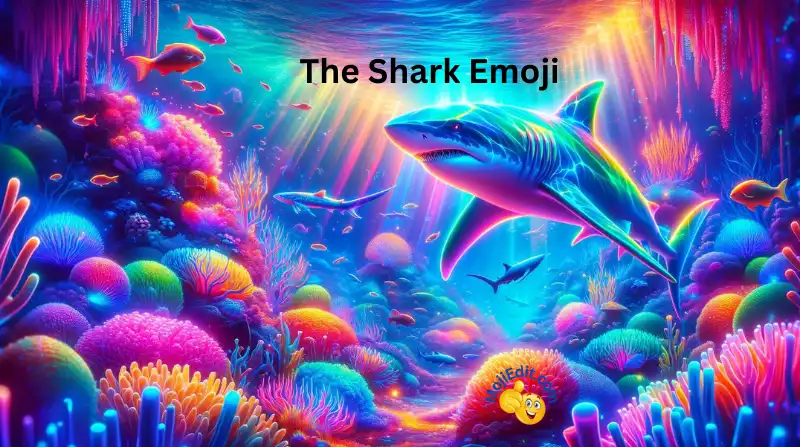
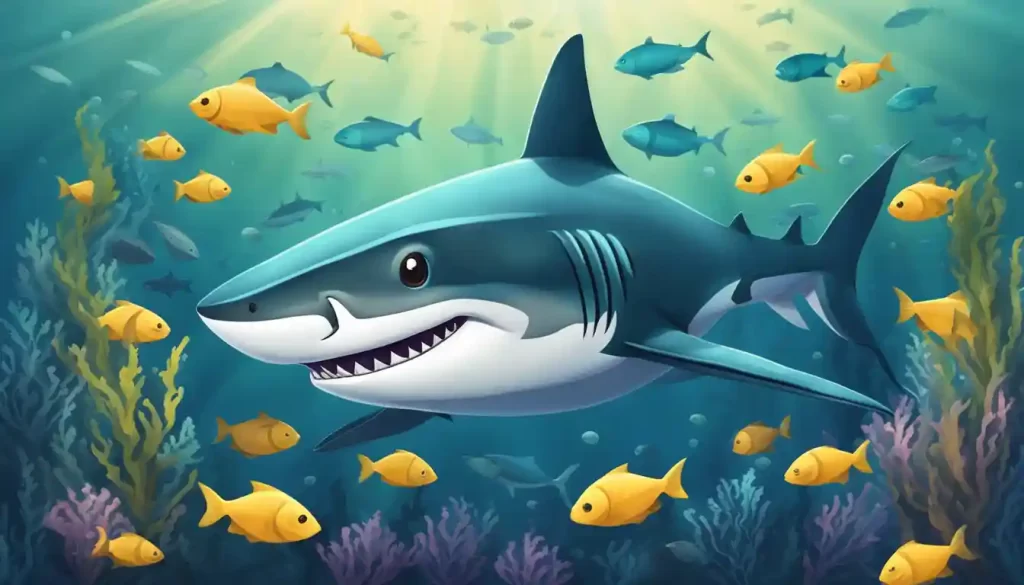
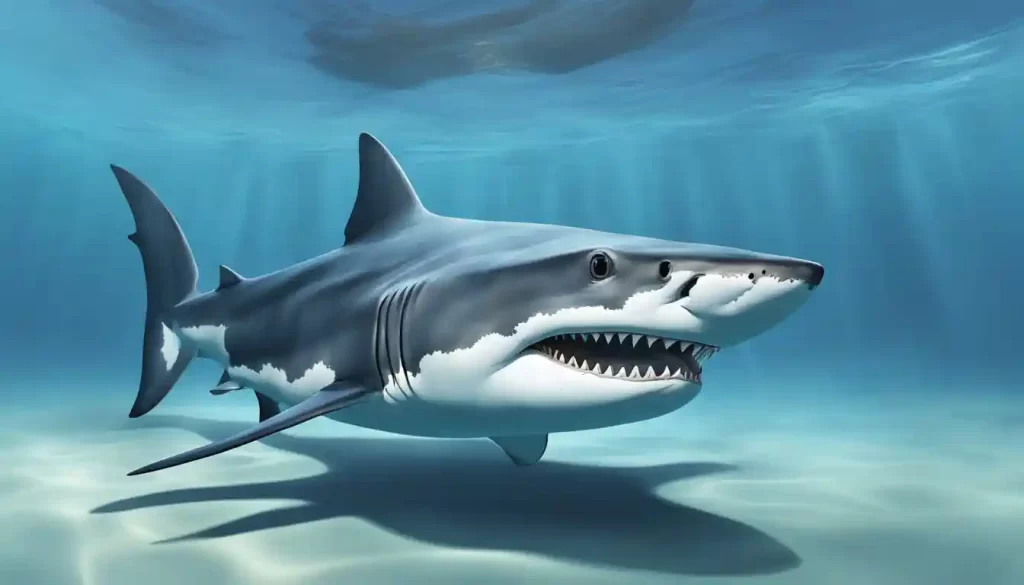
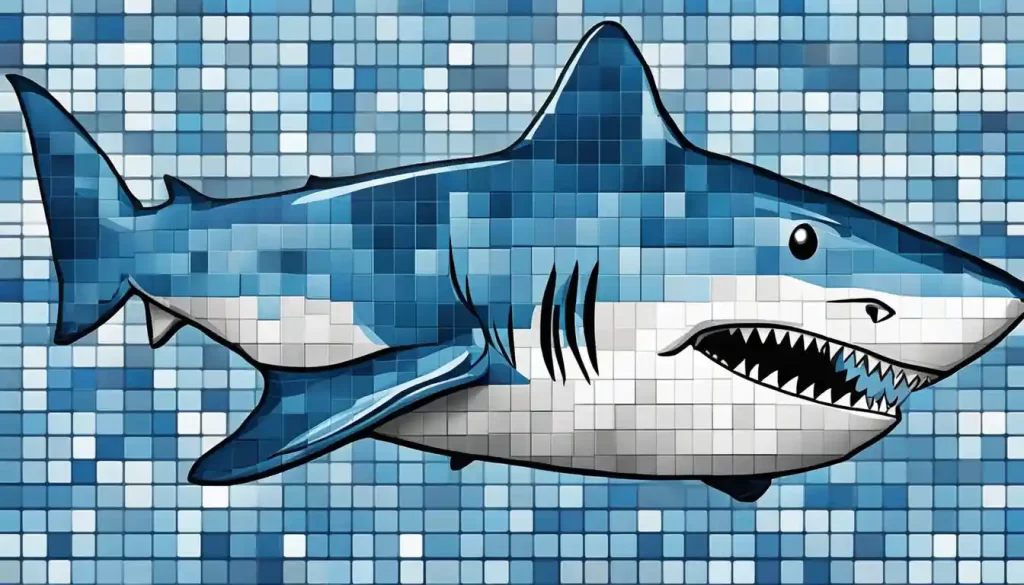

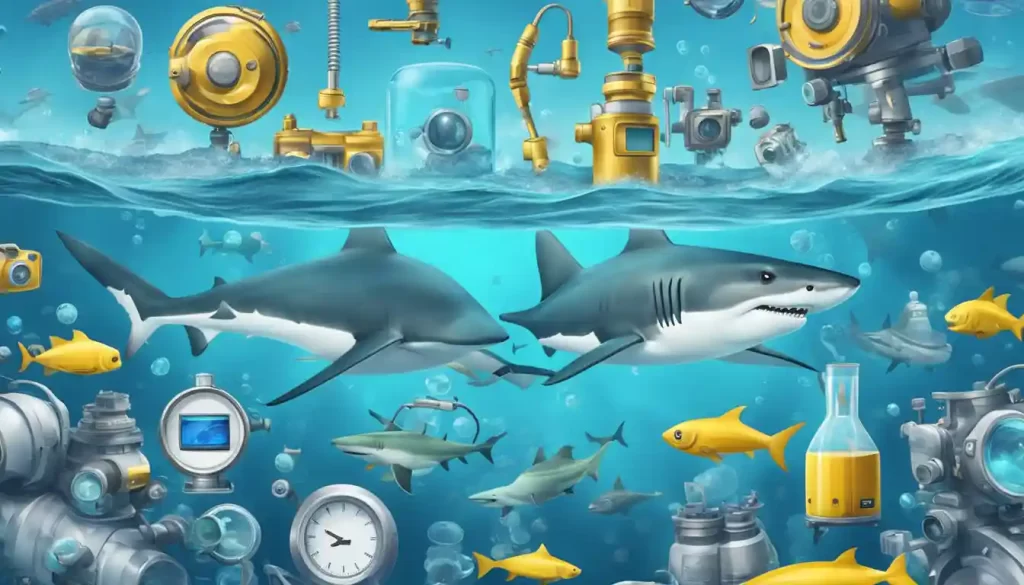
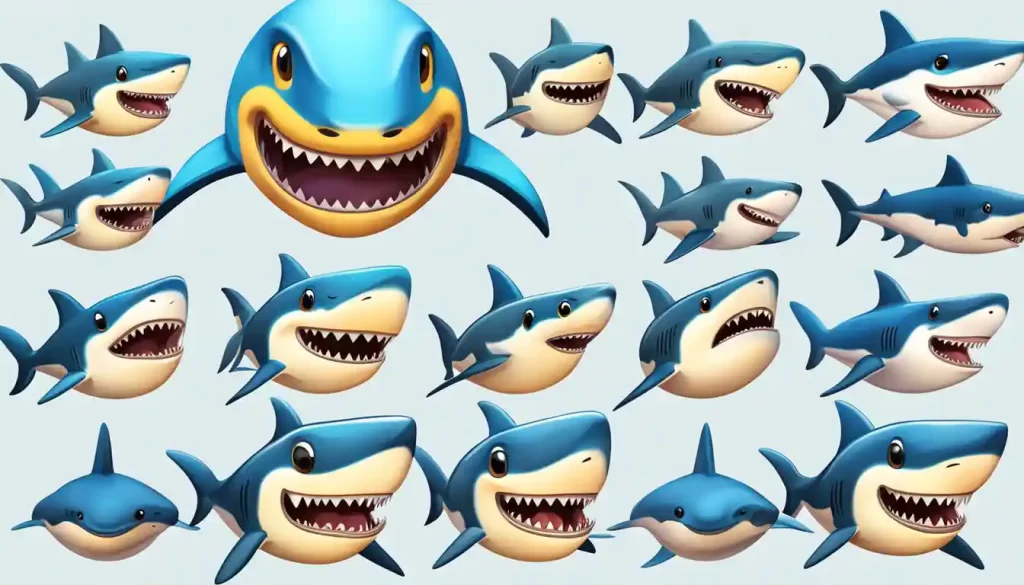


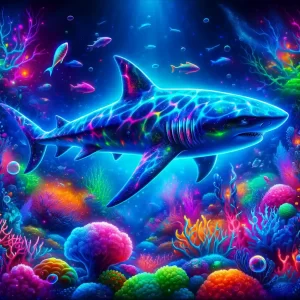 Conclusión
Conclusión